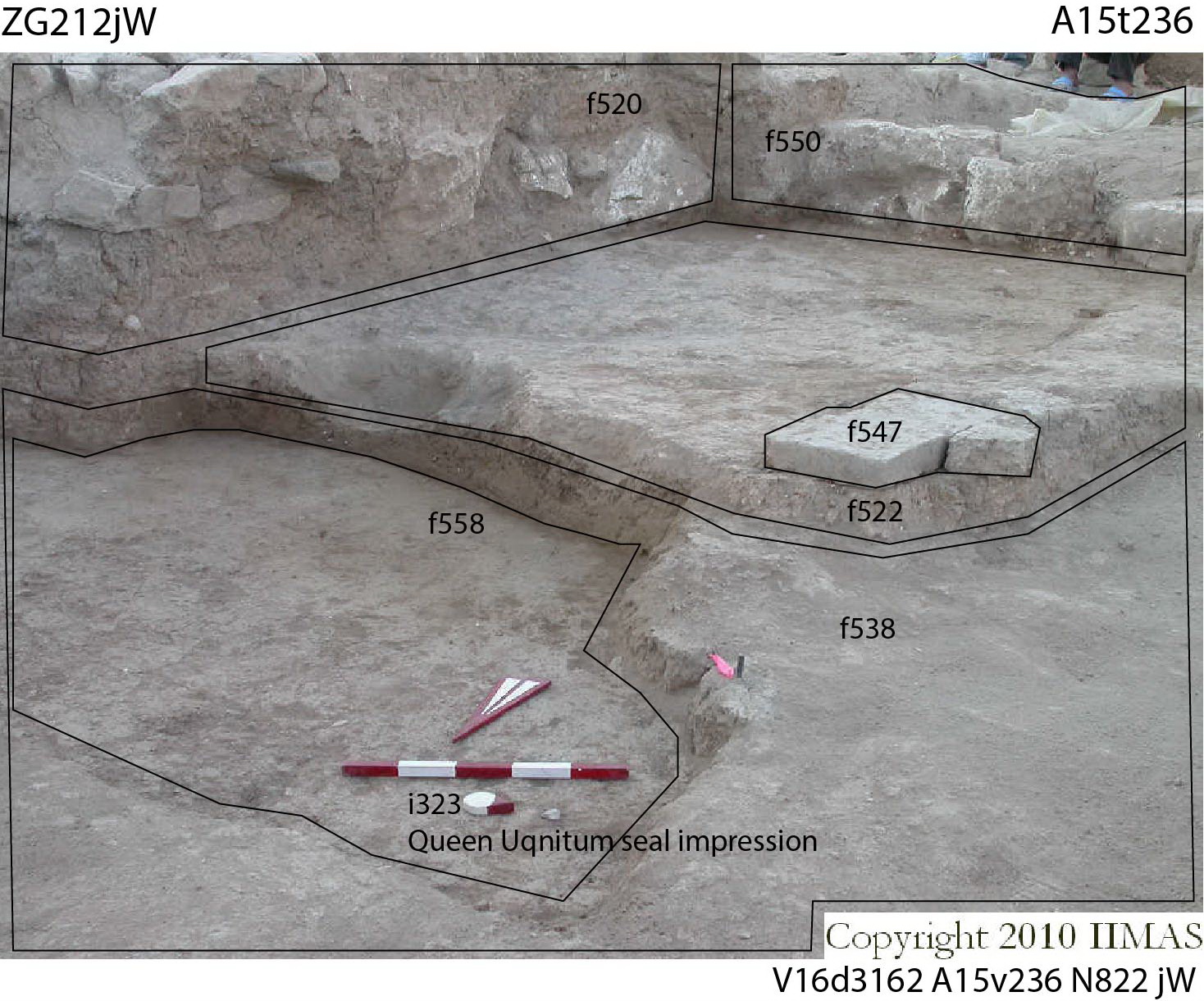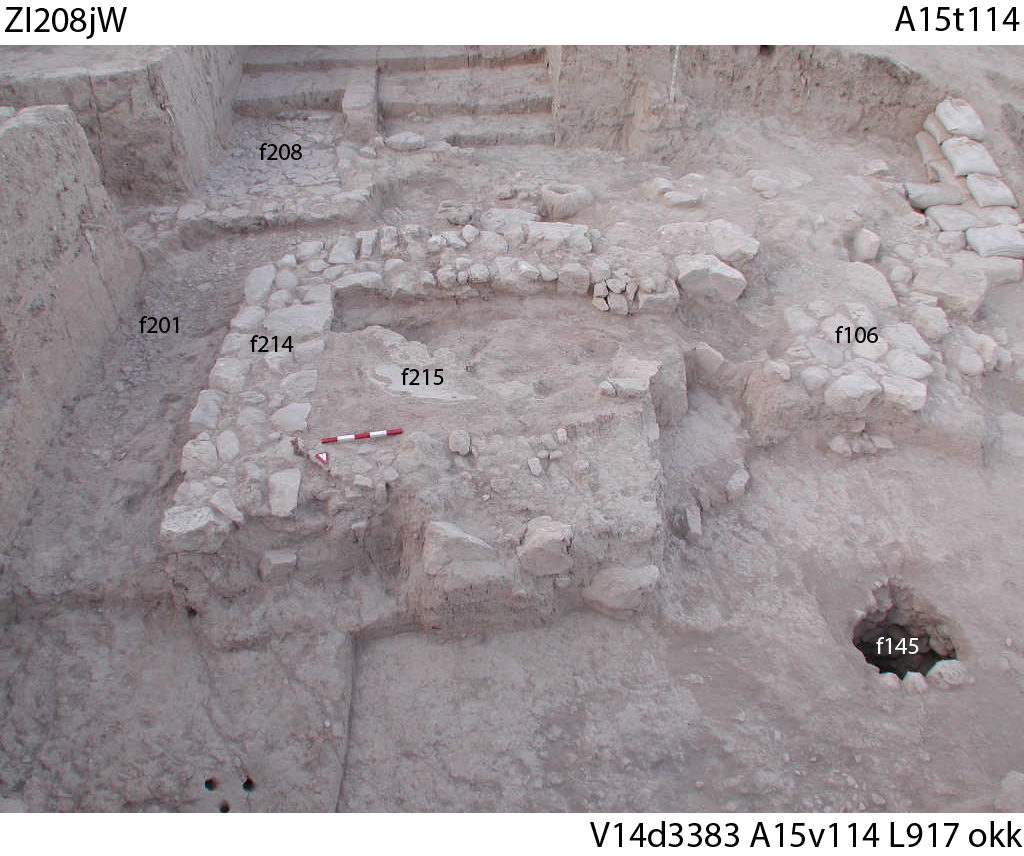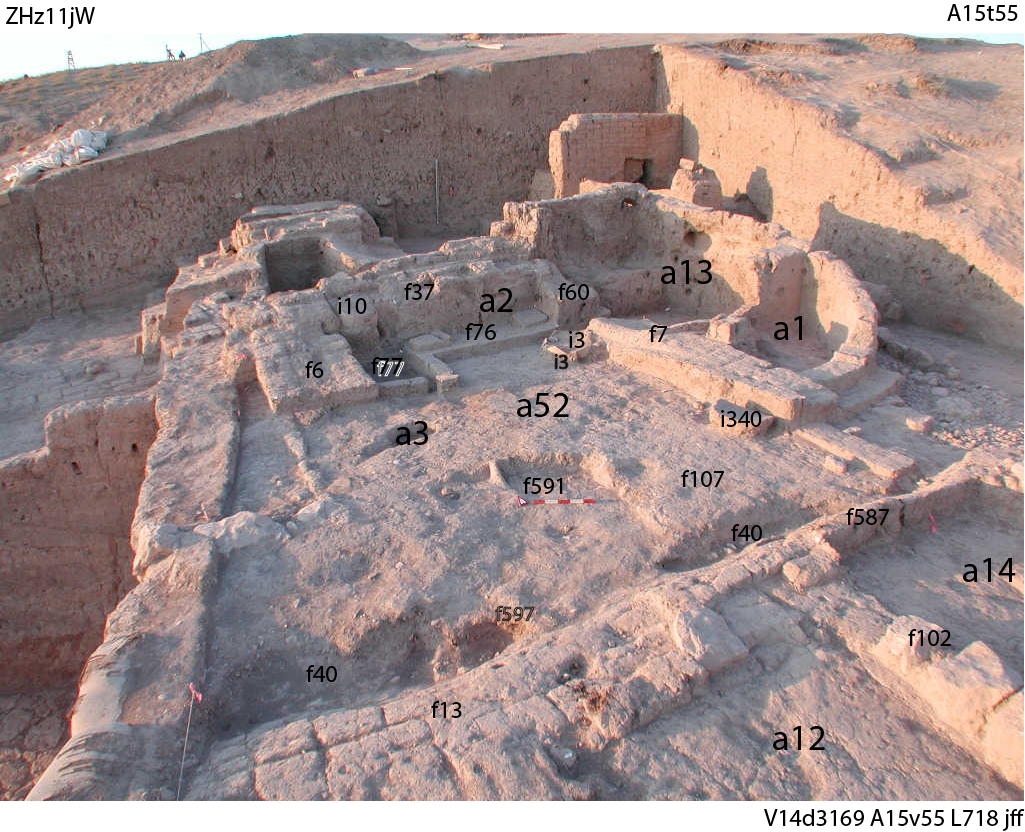Back to top: Accretion
Floor and Path accumulations
Accretion features constituted about 40% of the total excavated. There was significant buildup on floors and paths during several occupational periods, including Akkadian, Khabur, and Mittani. Gullys through the middle of the unit undoubtedly obliterated some, but those to the north and south of them were important indcators of the changes in use of the associated rooms and courtyards.
|
Most of the interior surfaces in lower levels of the northern part of the unit were constructed and used during the Akkadian period. Specifically, plaster floor, f554, and mudbrick floor f558 served a reception area for the formal courtyard A16a12. There are indications that it was kept clean. At some period in time, this courtyard ceased to be used as such and the floors began to be covered with living accumulations. The first was f538 which contained a seal impression, other items, and numerous sherds. Covering that was f522, seemingly containing soil from elsewhere, stones, and numerous sherds. A baked brick, f547, rested on this accumulation.
|
|

|
|
Pavements, f201, f208, and f212 linked many of the elements of the southern portion of the Akkadian palace remodeled as a shrine in the time of Queen Tar'am Agade. Presumably, it was kept clean while the shrine was in use. Eventually, accumulations f190, f196, and f207 covered the pavements, marking transition to another use, probably abandonment. Although these accumulations contained numerous sherds, there is no indication in the record that they were oriented horizontally.
|
|

|
|
The industrial coutyard in the Khabur town, a52, had a succession of earthen floors over time. The lowest recognizable floors, f117 and f118, were covered by an accumulation, f107, that covered the entire space. It contained a number of items and sherds and gradually built up over time. At the highest levels, another earthen floor, f26, abutted it. This floor was in turn covered by accumulation, f21, which probably marked the end of Khabur use of the courtyard.
|
|

|
|
Another interesting transition occurred when the high Mittani floor, f310, was covered by accumulation, f307. This marked the end of Mittani occupation of this area and furthermore marked the end of organized activities on this part of the tell.
|
Back to top: Accretion
Natural accumulations
Natural accumulations comprise two thirds of the excavated accretions. They were notably present on or near the surface after organized occupation ceased and in the Isin Larsa and Ur III periods when there was no activity in this part of the tell.
Back to top: Accretion


